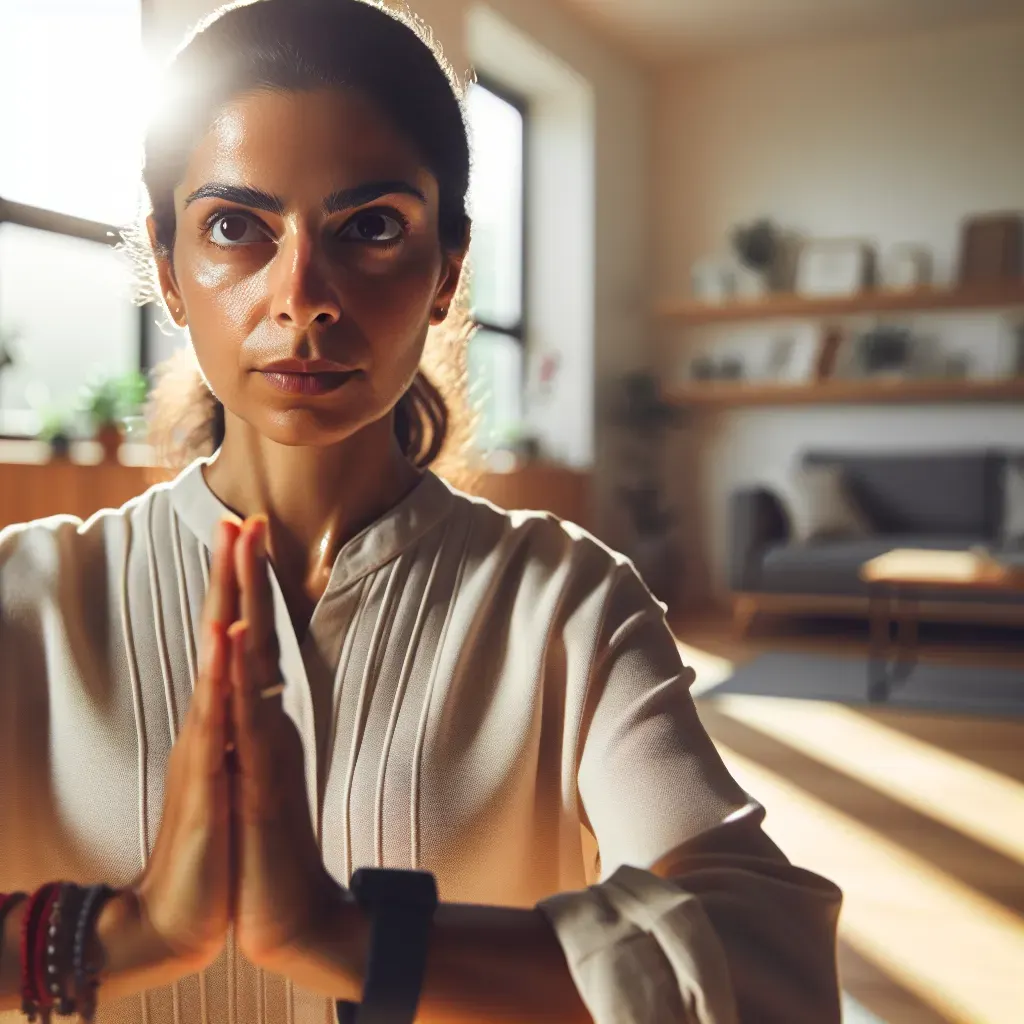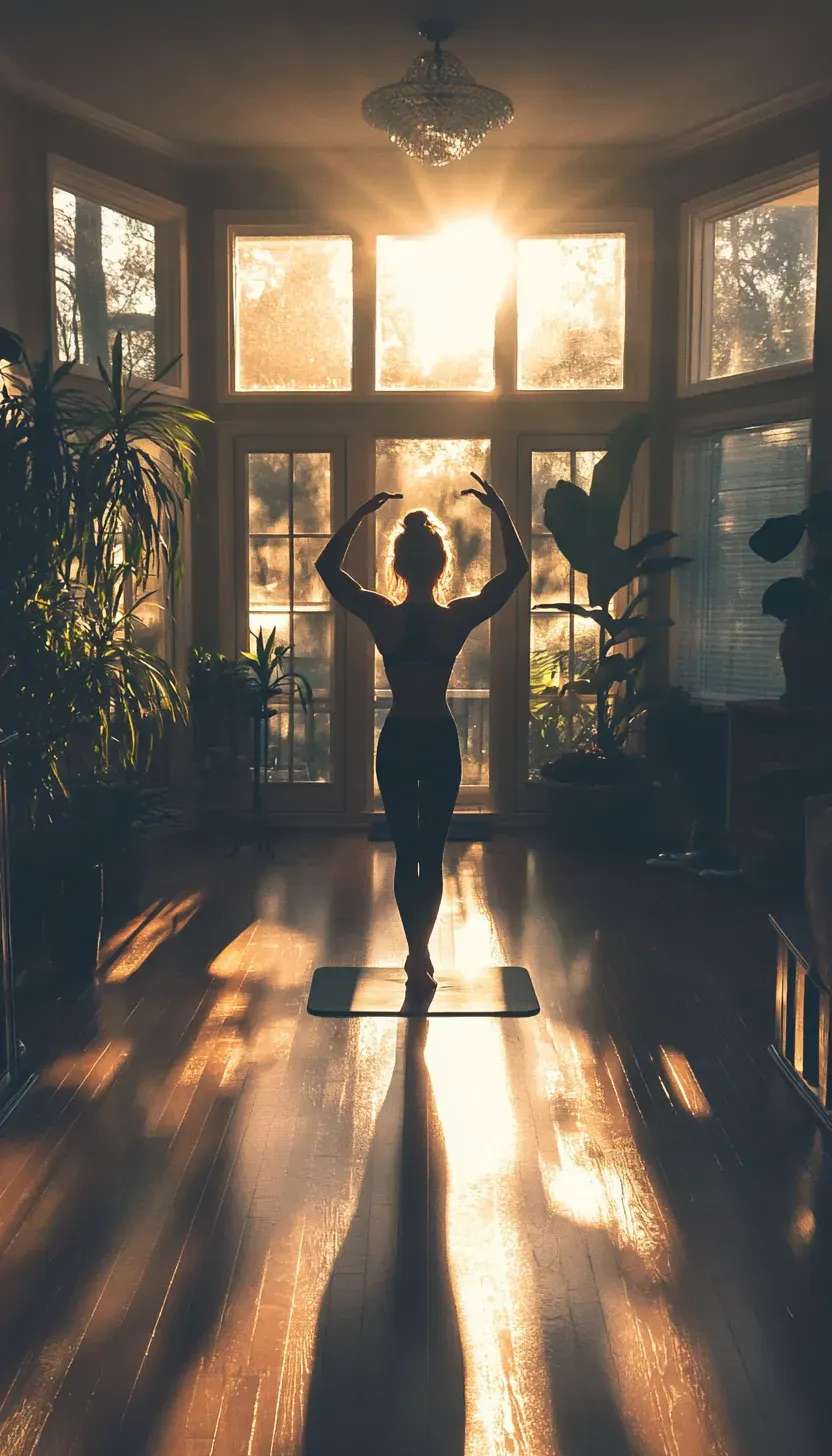Overcoming Mental Blocks: Strategies for Boosting Confidence in Your Vinyasa Journey
Table of Contents
- Understanding Mental Blocks in Vinyasa
- Recognizing Your Challenges
- The Importance of Mindfulness in Practice
- Setting Realistic Goals for Progress
- Building a Supportive Community Around You
- Techniques for Cultivating Self-Compassion
- Embracing the Journey, Not Just the Destination
- Visualizing Success: A Powerful Tool
- Embracing Confidence in Your Practice
Understanding Mental Blocks in Vinyasa
Mental blocks in Vinyasa often manifest as an internal dialogue that can disrupt the fluidity of practice. These blocks may arise from fear of inadequacy, comparison to others, or past injuries that linger in the mind.
Understanding the root of these thoughts is essential; they can be as subtle as a fleeting doubt or as pronounced as an overwhelming sense of anxiety.
By recognizing these patterns, practitioners can begin to dismantle the barriers they create, transforming their yoga mat into a safe space for exploration rather than a stage for self-criticism.
Moreover, reframing your perception of these mental blocks can be a powerful strategy. Instead of viewing them as obstacles, consider them opportunities for growth and self-discovery.
Each time you encounter a block, pause and inquire: What is this feeling teaching me? This reflective practice not only cultivates mindfulness but also empowers you to approach your Vinyasa journey with curiosity and compassion.
Embrace the ebb and flow of your thoughts; like the breath, they are transient. By integrating this perspective, you can shift from a mindset of limitation to one of possibility, allowing your practice to flourish in new and unexpected ways.
Recognizing Your Challenges
Recognizing your challenges is the first step toward transforming them into opportunities for growth in your vinyasa journey.
Each time you step onto your mat, take a moment to tune into your mind and body; what thoughts arise?
Are you plagued by self-doubt, or do you find yourself comparing your practice to others?
Acknowledging these internal dialogues allows you to uncover the deeper issues that may be holding you back, whether they stem from past experiences or current fears.
Instead of viewing these challenges as obstacles, try reframing them as teachers. Each struggle, be it a difficult pose or a fleeting moment of frustration, can offer valuable insights into your resilience and determination.
Embrace the discomfort as a vital part of your practice; it’s in these moments that true breakthroughs occur.
By recognizing and accepting your unique hurdles, you pave the way for greater self-awareness and, ultimately, a more fulfilling vinyasa experience.
The Importance of Mindfulness in Practice
In the journey of Vinyasa practice, mindfulness serves as the thread that weaves together physical movement and mental clarity.
When we approach each pose with intention and awareness, we cultivate a deeper connection to our bodies and breath.
This heightened state of consciousness allows us to observe our thoughts without judgment, empowering us to confront mental blocks that may hinder our progress.
By anchoring ourselves in the present moment, we can transform anxiety into acceptance, unlocking a pathway to confidence that feels both authentic and grounded.
Moreover, mindfulness enhances our ability to embrace vulnerability on the mat. Rather than viewing mistakes or challenges as setbacks, we can reframe them as opportunities for growth and self-discovery.
Each breath becomes a gentle reminder that perfection is not the goal; instead, it’s the willingness to explore and express ourselves freely.
As we learn to let go of expectations, we open the door to creativity and resilience, allowing our practice to evolve organically and joyfully.
In this way, mindfulness not only enriches our Vinyasa experience but also nurtures a more compassionate relationship with ourselves, paving the way for newfound confidence both on and off the mat.
Setting Realistic Goals for Progress
Setting realistic goals is a cornerstone for fostering progress in your Vinyasa practice. Instead of overwhelming yourself with lofty aspirations, consider breaking down your journey into smaller, manageable milestones.
For instance, rather than aiming to master a challenging pose overnight, focus on developing the foundational strength and flexibility required for it.
This approach not only builds confidence but also cultivates a deeper appreciation for each step along the way.
Moreover, embracing the concept of progress over perfection can transform your mindset. Celebrate the small victories, whether it’s holding a pose for an extra breath or feeling more aligned in your movements.
Each achievement, no matter how minor it seems, serves as a building block that reinforces your commitment to growth.
By regularly reflecting on your progress and adjusting your goals as needed, you create a dynamic practice that evolves alongside you, making your Vinyasa journey not just about reaching the destination but enjoying the process of getting there.
Building a Supportive Community Around You
Creating a supportive community is crucial for anyone navigating the ups and downs of their Vinyasa journey.
Surrounding yourself with like-minded individuals fosters an environment where vulnerability is not just accepted but celebrated.
When you share your struggles and triumphs with others who understand the path, you cultivate a sense of belonging that can significantly enhance your practice.
Each member's unique experience contributes to a richer collective narrative, offering diverse perspectives that can help you break through mental blocks.
Engaging actively within this community can also serve as a powerful source of motivation. Whether it’s through group classes, workshops, or online forums, participating in shared experiences encourages accountability and growth.
Consider forming a study group or a buddy system where you can exchange insights, challenges, and breakthroughs.
This camaraderie not only reinforces your commitment to personal growth but also reminds you that you’re not alone in your journey; everyone encounters obstacles along the way.
By lifting each other, you’ll find that confidence blossoms not just within yourself but within the entire community.
Techniques for Cultivating Self-Compassion
One powerful technique for cultivating self-compassion is to practice mindfulness during your Vinyasa sessions. As you flow through each pose, take a moment to observe your thoughts and feelings without judgment.
Instead of critiquing yourself for not achieving the perfect posture or feeling frustrated with your progress, acknowledge those emotions as part of your journey.
This gentle awareness can transform negative self-talk into a nurturing inner dialogue, allowing you to embrace imperfections as opportunities for growth.
Another effective approach is to incorporate Loving-Kindness Meditation into your routine.
Set aside a few minutes before or after your practice to repeat phrases like “May I be happy, may I be healthy, may I be at peace.”
This simple yet profound exercise fosters a sense of connection with yourself and others, reinforcing the understanding that everyone struggles and deserves kindness.
Over time, this habit can help dissolve barriers of self-criticism, empowering you to approach your Vinyasa journey with an open heart and a more resilient spirit.
Embracing the Journey, Not Just the Destination
In the practice of Vinyasa, each flow is a journey unto itself, rich with opportunities for self-discovery and growth.
When we shift our focus from merely reaching a certain pose or mastering a sequence to truly experiencing each moment on the mat, we unlock a deeper connection with ourselves.
This perspective invites us to embrace the imperfections along the way. Each wobble, each misalignment becomes a lesson rather than a setback.
By savoring the subtle nuances of breath and movement, we cultivate a sense of presence that transcends the physical practice.
Moreover, this journey mindset encourages vulnerability and authenticity. As we navigate through challenges, whether it's holding a challenging pose or facing mental blocks, we learn to honor our unique rhythm and pace.
Each practice becomes a reflection of our current state, allowing us to celebrate small victories instead of fixating solely on end goals.
In doing so, we build resilience and confidence that extends beyond the mat, empowering us to approach life's obstacles with the same grace and curiosity we nurture in our Vinyasa practice.
Embracing the journey invites us to see that every step, no matter how small, is vital in shaping who we are becoming.
Visualizing Success: A Powerful Tool
Visualizing success is more than just a fleeting daydream; it’s a powerful cognitive tool that can reshape your Vinyasa practice.
By creating vivid mental images of your ideal performance, whether it’s mastering a challenging pose or achieving a state of serene flow, you engage both your mind and body in preparation for the physical work ahead.
This technique activates neural pathways similar to those used during actual practice, reinforcing muscle memory and building confidence.
Imagine yourself transitioning smoothly from downward dog to warrior two, feeling the strength in your limbs and the calm in your breath.
This mental rehearsal not only enhances your physical capabilities but also fosters a deeper connection to your practice.
Moreover, visualization helps dismantle the mental barriers that often accompany self-doubt. When you visualize success, you’re not just imagining outcomes; you're also confronting the fears that hold you back.
Instead of shying away from difficult postures, you begin to see them as achievable milestones on your journey. Each successful visualization cultivates resilience, allowing you to approach your mat with renewed vigor and optimism.
As you weave this practice into your routine, you'll discover that the path to confidence is illuminated by the clarity of your vision, guiding you through each flow with a sense of purpose and ease.
Embracing Confidence in Your Practice
Embracing confidence in your Vinyasa practice begins with acknowledging the unique journey each practitioner undertakes. Rather than comparing your progress to others, focus on the subtle transformations that occur within yourself.
Celebrate the small victories, whether it's mastering a challenging pose or simply feeling more present on the mat.
This self-acknowledgment is not just about physical prowess; it’s a powerful affirmation of your growth, both mentally and emotionally.
Moreover, confidence can be cultivated through intentional visualization techniques. Before stepping onto your mat, take a moment to visualize yourself flowing seamlessly through your practice.
Imagine each pose as a reflection of your inner strength, allowing this imagery to infuse your movements with purpose and clarity.
As you breathe deeply, let go of self-doubt and invite a sense of empowerment into your practice. With each inhale, draw in confidence; with each exhale, release any lingering fears.
By transforming your mindset in this way, you’ll discover that confidence isn’t merely an outcome but an integral part of your Vinyasa journey, guiding you toward deeper self-discovery and joy.
People Also Asked
Q1: What are common mental blocks in Vinyasa yoga?
A1: Fear of failure, comparison, past injuries, and self-doubt are typical mental blocks in Vinyasa practice.
Q2: How can I build confidence in my yoga practice?
A2: Set realistic goals, use visualization, practice mindfulness, and focus on personal growth.
Q3: How does mindfulness help in Vinyasa?
A3: It connects breath and movement, reduces anxiety, and builds self-awareness on the mat.
Q4: What role does community play in Vinyasa practice?
A4: A supportive community offers motivation, shared experiences, and emotional encouragement.
Q5: Can visualization improve yoga performance?
A5: Yes, it builds confidence, enhances focus, and strengthens the mind-body connection.
Q6: How do I stop comparing myself to others in yoga?
A6: Focus on your progress and set personal goals rather than external benchmarks.
Q7: Why do I feel anxious before yoga class?
A7: Mental blocks often stem from fear of judgment, unfamiliar poses, or self-imposed pressure.
Q8: What is Loving-Kindness Meditation in yoga?
A8: It's a mindfulness practice using affirmations to foster compassion toward yourself and others.
Q9: How do I handle frustration during a tough practice?
A9: Reframe struggles as learning opportunities and return to breath to reset your focus.
Q10: What’s the best way to track progress in Vinyasa?
A10: Use journaling, self-reflection, or record subtle changes in strength, breath, and mindset.





